Flea markets, layering, and placemaking
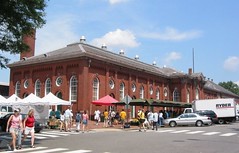
Eastern Market, Washington, DC. Photo by Keith Stanley.
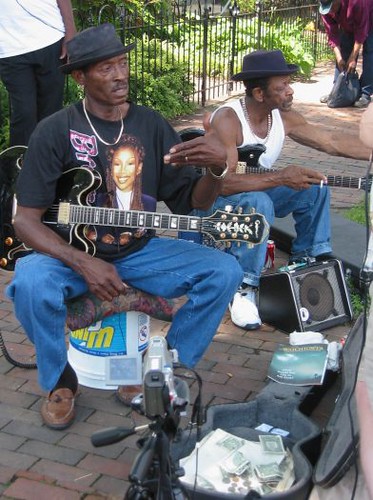 S
Street musicians on 7th Street SE. Photo by Keith Stanley. I think that one great thing about Eastern Market is its diverse crowd of vendors and customers. I think that has a lot to do with John Harrod and the Market 5 Gallery.
A couple weeks ago on the public.markets email list (subscribe through the PPS website) I wrote about the vital importance of the flea market at Eastern Market in terms of "animating" 7th Street SE. Back then, the Market was closed on Sundays and 7th Street and much of Capitol Hill was a ghost town.
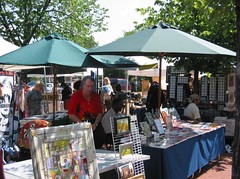
Saturday flea market in the North Plaza. Photo by Keith Stanley.
Fred Kent of PPS calls the process of having a number of attractions together "layering." Jane Jacobs called it "mixed primary uses."
As the flea market began to draw people, businesses on 7th Street SE opened up on Sundays, and the public market interior responded and opened up as well. Now, even some farmers sell on the outside market line on Sundaysl, and the Hine School parking lot became the site of an unaffiliated flea market, adding yet more activity to the area. Now, most of the businesses are open along 7th Street SE, and for many it is as good a day for sales as is Saturday.
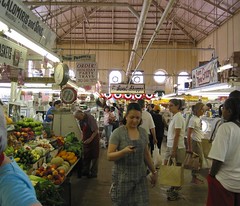
Open Sundays... Photo by Keith Stanley.
This was a many year process and people still don't agree that the flea market was essential to this process. Anyway, my post ended up getting forwarded to an Eastern Market merchant and we had a spirited week of private email discussion.
___________________
Note that I continually mention to people that the six different things going on:
(1) Eastern Market public market (interior);
(2) outside farmers line;
(3) flea markets on Saturday and Sunday;
(4) North Hall (Market 5 Gallery);
(5) the flea markets at the Hine parking lot; and
(6) the open businesses along 7th Street collectively make up one large attraction, and for the average visitor, all they care about is that it works and is exciting, meaning that these various segments need to come together and work together and market-promote together. Tom Rall's website is the closest to this happening right now.
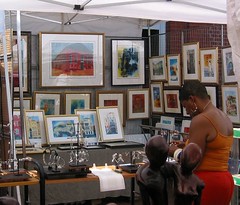
Mike Berman's art. Photo by Keith Stanley.
__________________
Ironically, most farmers are not into flea markets, seeing flea market sales as junky and not complementary. I think that both flea markets (Eastern Market, Hine lot) do a good job in ensuring that there is quality in terms of what's sold. That's always been the knock against the flea market that was at RFK and has since been relocated to the vicinity of the "Wholesale Food Market" in the Florida Market area.
Today's Post has an article about how flea markets are seriously being impacted by online sales, particularly via Ebay--"Internet Auctions Bring a Big Shift To Once-Quirky Flea Markets." (Note that yesterday's Post had an article about organized retail shoplifting, and how much of the merchandise, such as expensive but marked down razor blades, are sold through flea markets.) If the Post had done a story on the flea markets in DC, rather than in San Jose, California, I wonder what they might have found?
I guess it's all a matter of the quality of what is being sold, making the place great.
There is an interesting article from today's Philadelphia Inquirer, "Summer craft fair's fate is up in the air: Organizers fear that changing times and a clash over market time may mean the end of the Headhouse fair after 37 years," about the South Street Headhouse Crafts Market, that sounds like a different experience from Eastern Market. It mentions that over time, they had to broaden their array of offerings, which moved away somewhat from locally produced art and artists. I can see the need for this because when it comes down to it, how many people buy paintings, photographs and sculptures. Wearable art (jewelry) might sell better. But still, people are buying furniture, cds, books, and other stuff.
But they declined to combine with a farmers market, and they seem to have declined from joining with other efforts.
Again, wrt "layering," great numbers of people are required to make retail work. Cities need to provide activities that highlight the pedestrian experience and play off the vitality of the street.
That's playing off the competitive advantage or "unique selling proposition" that cities have to offer.



0 Comments:
Post a Comment
<< Home